The quickest approach to effective window washing that delivers crystal clear glass without frustrating streaks.
Window Washing Tips and Techniques for a Streak-Free Shine
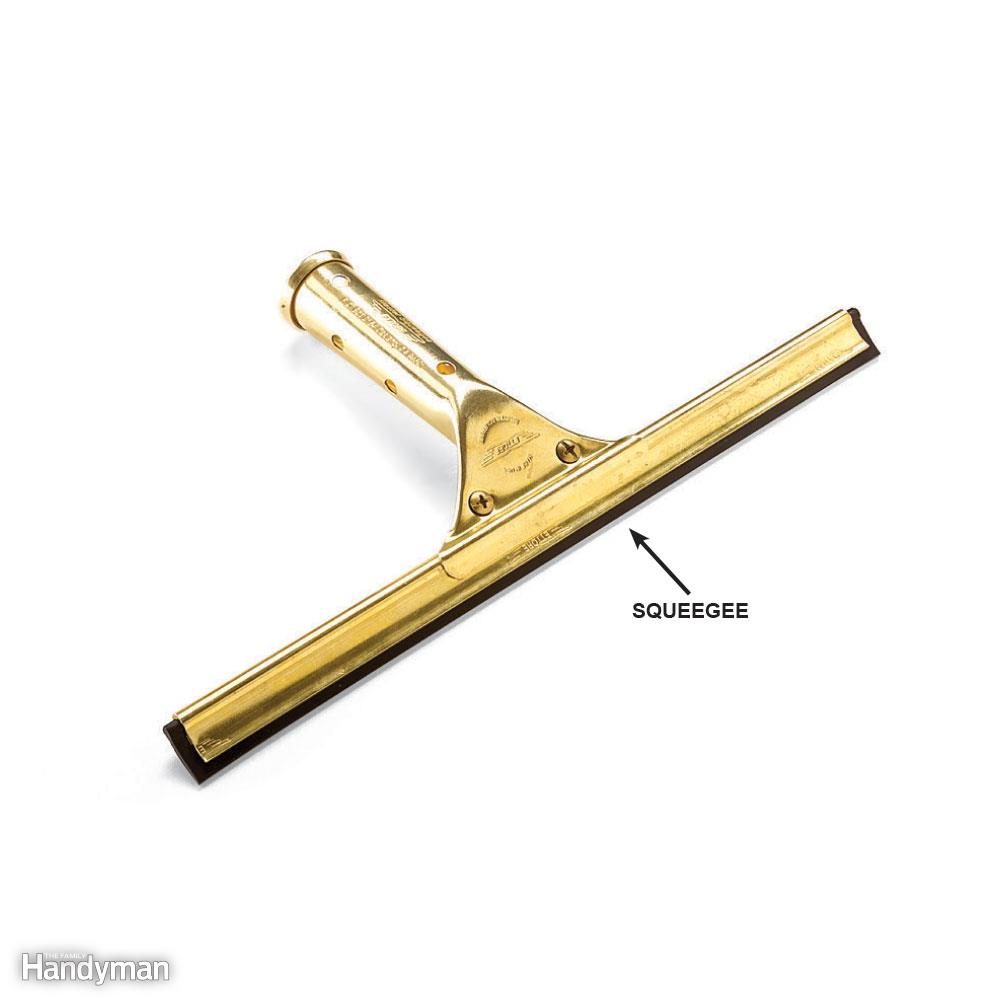
Essential Tools for Washing Windows
When learning how to clean windows at home, remember that the same high-quality window washing tools the pros use are readily available online, at home centers and in full-service hardware stores. Here’s what you need:
- 10 or 12-in. squeegee: The cornerstone of streak-free window cleaning.
- A scrubber or a sponge: To apply your cleaning solution. Consider having separate ones for inside and outside to avoid transferring grime.
- A bucket: A 5-gallon plastic bucket will work fine.
- Dish soap: A key ingredient for your cleaning solution.
- Lint-free rags or small towels: Microfiber cloths are highly recommended for wiping blades and drying edges.
- A ladder and a ladder stabilizer (if needed): For safely reaching higher windows. Extension poles are also a great option for accessing windows from the ground.
>Keep your squeegee fitted with a sharp rubber blade. Purchase two or three extra rubber blades to have on hand.
Pro tip: You can get a little more mileage out of blades that aren’t nicked or sliced by simply reversing them to expose a fresh edge. When you store the squeegee, make sure nothing touches the blade.
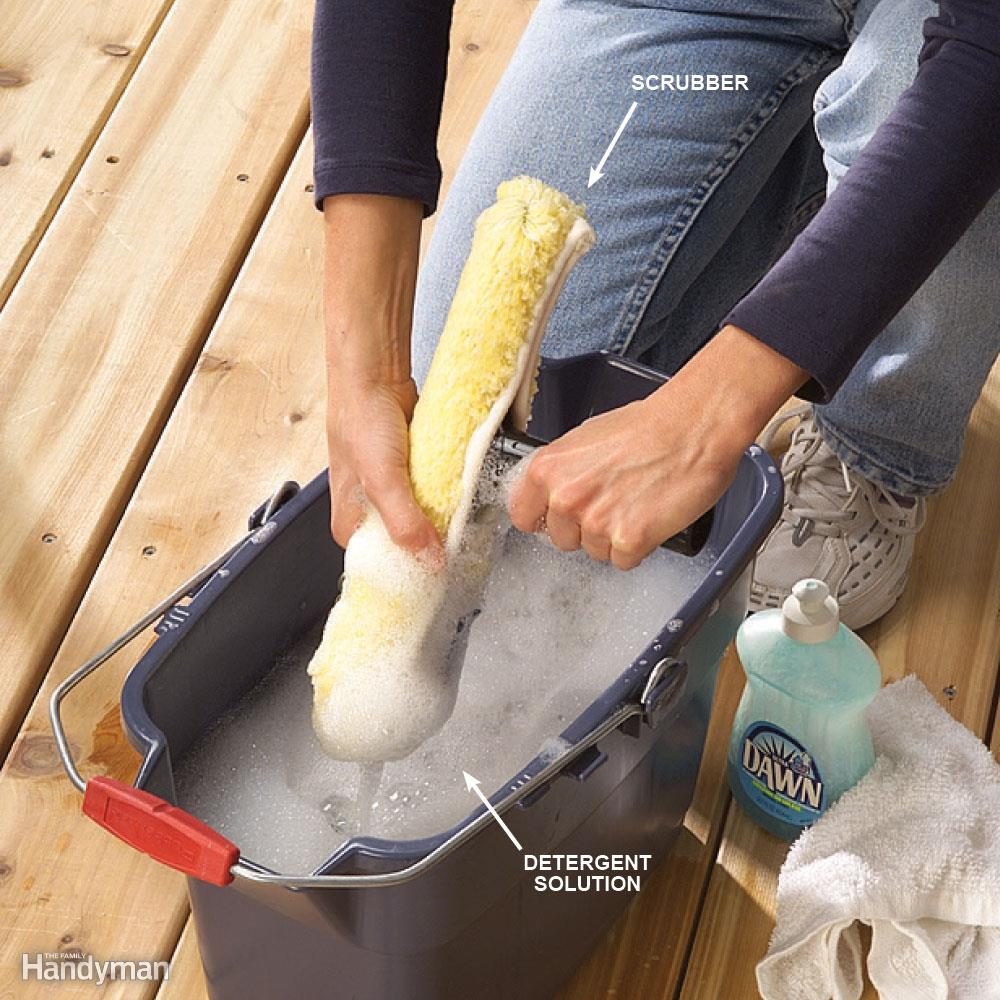
Mixing Your Own Cleaning Solution
The best homemade window cleaning solution is to just mix two gallons of water and about a teaspoon of dishwashing liquid together in your bucket. This straightforward mixture works for routine cleaning, though many window pros prefer combining equal parts white vinegar and water. Both formulas have their places in your cleaning arsenal—soapy water tackles outdoor dirt while vinegar prevents streaking.
The key with soap-based solutions is restraint—a tiny bit does the job since too much creates a sudsy mess that’s tough to rinse thoroughly from glass surfaces. For particularly grimy outside windows, consider adding just the smallest drop of dish soap to your vinegar mixture for additional cleaning power without sacrificing that streak-free finish.
Pro tip: Use less soap than you think you need. Dumping in way too much will create a sudsy mess that requires multiple rinses. Just a tiny bit does the job while avoiding residue that clouds your view and is the best way to wash windows.
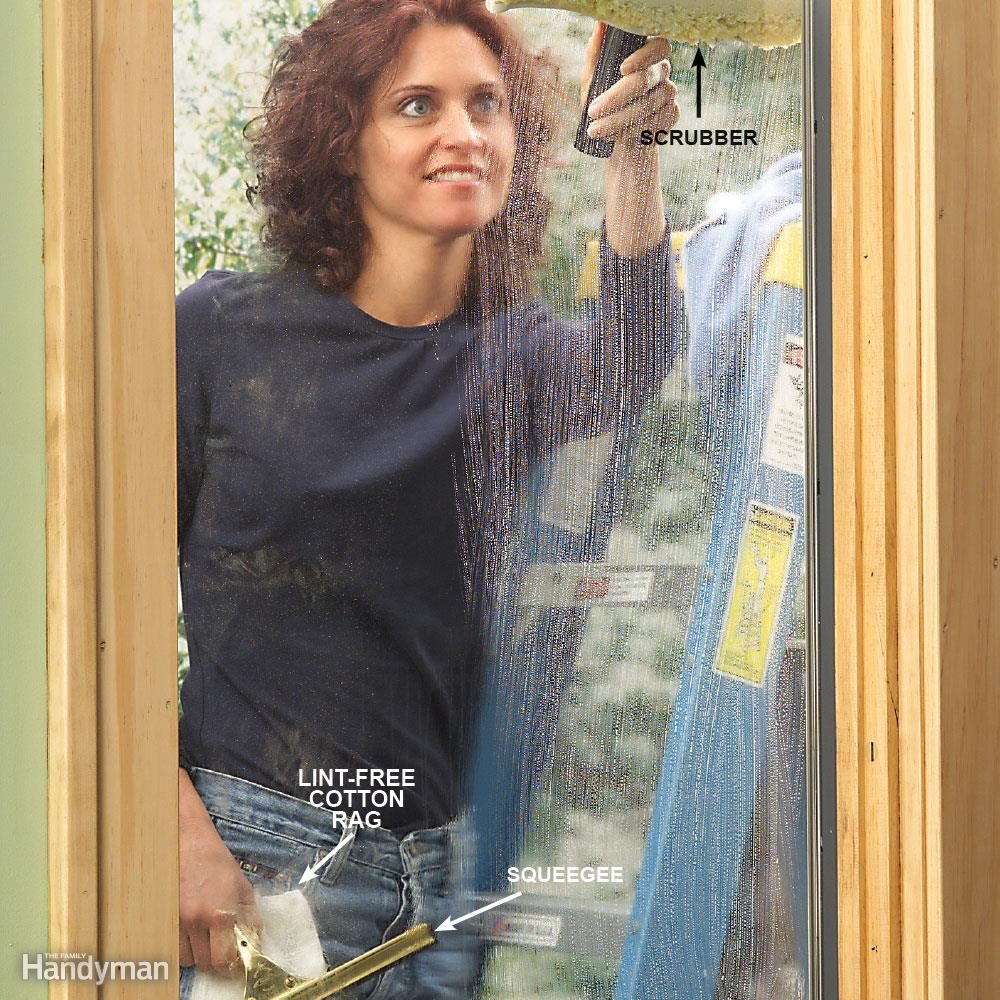
Scrub the Glass with Your Cleaning Solution

Clean a Starting Strip
Tip the squeegee so that only the corner contacts the glass. Then, starting at the top corner of the glass, clean a narrow strip of glass from top to bottom on one side. This establishes a clear starting point that prevents water from running back into your cleaned areas when you begin your main horizontal passes across the glass.

Squeegee Across the Top
Now for the main event—press the squeegee blade against the glass in the upper corner and pull it steadily across the window. Concentrate on keeping the top of the squeegee in contact with the top edge of the window.

Wipe the Squeegee Clean
This step is critical for streak-free window cleaning. Wipe the blade on the clean towel or wipe it across the scrubber to remove dirt and excess water. This keeps each new stroke clean by preventing dirt from being dragged across your glass.
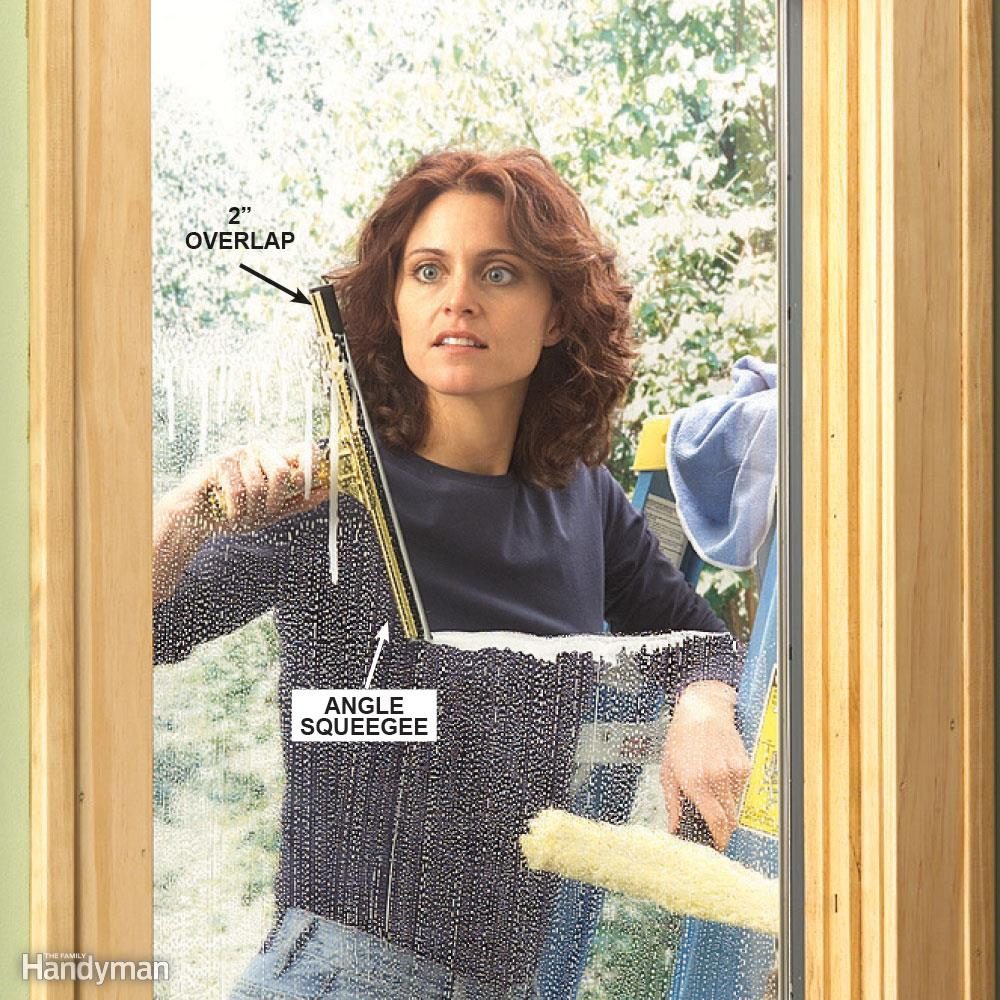
Work Down the Window
Begin again, with the top of the squeegee overlapping the previous stroke about 2-in. Pull the squeegee across the window at an angle to direct excess water down. Wipe and repeat.
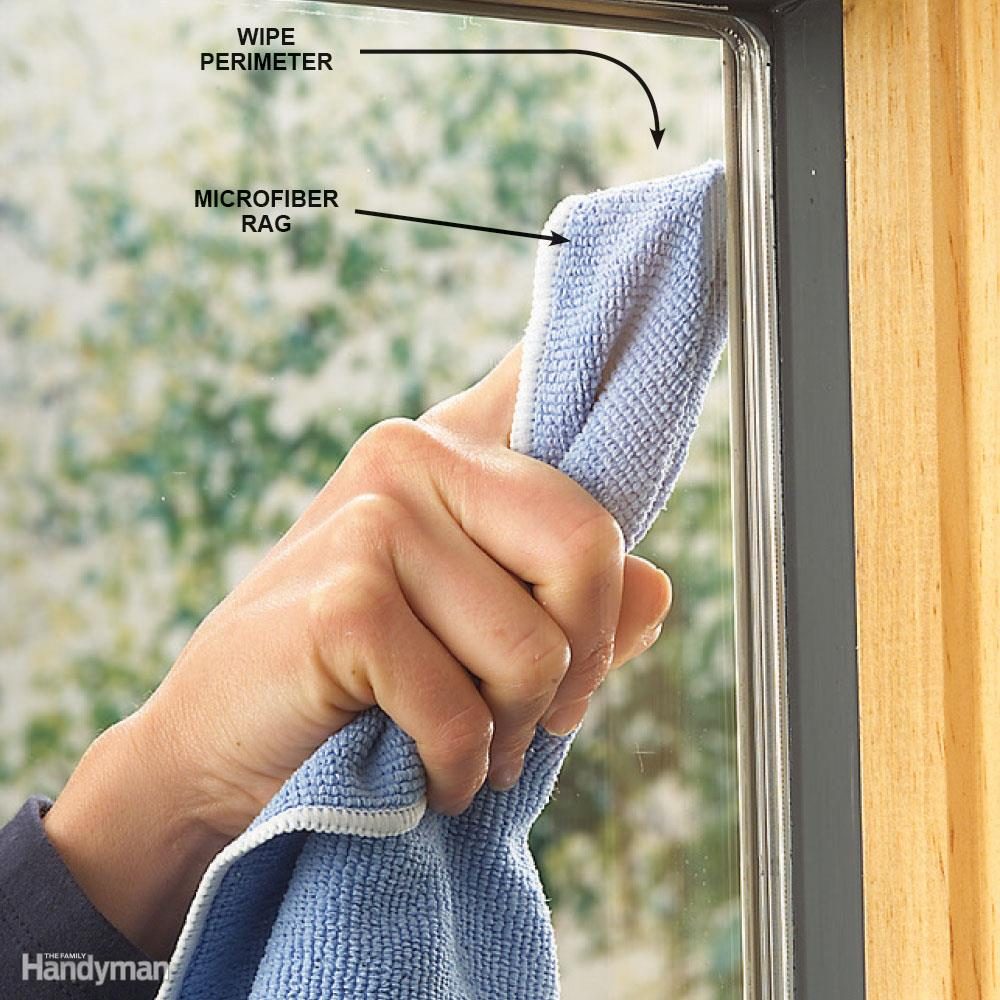
Wipe Off Excess Water
The next step in exterior window cleaning is to use the rag in your pocket to wipe up excess water along the bottom edge of the window. Then poke your finger into a dry spot on a separate lint-free rag and run it around the perimeter of the window to remove any remaining suds. Wipe off any streaks using a clean area of the lint-free rag. Change rags when you can’t find any fresh, clean areas.
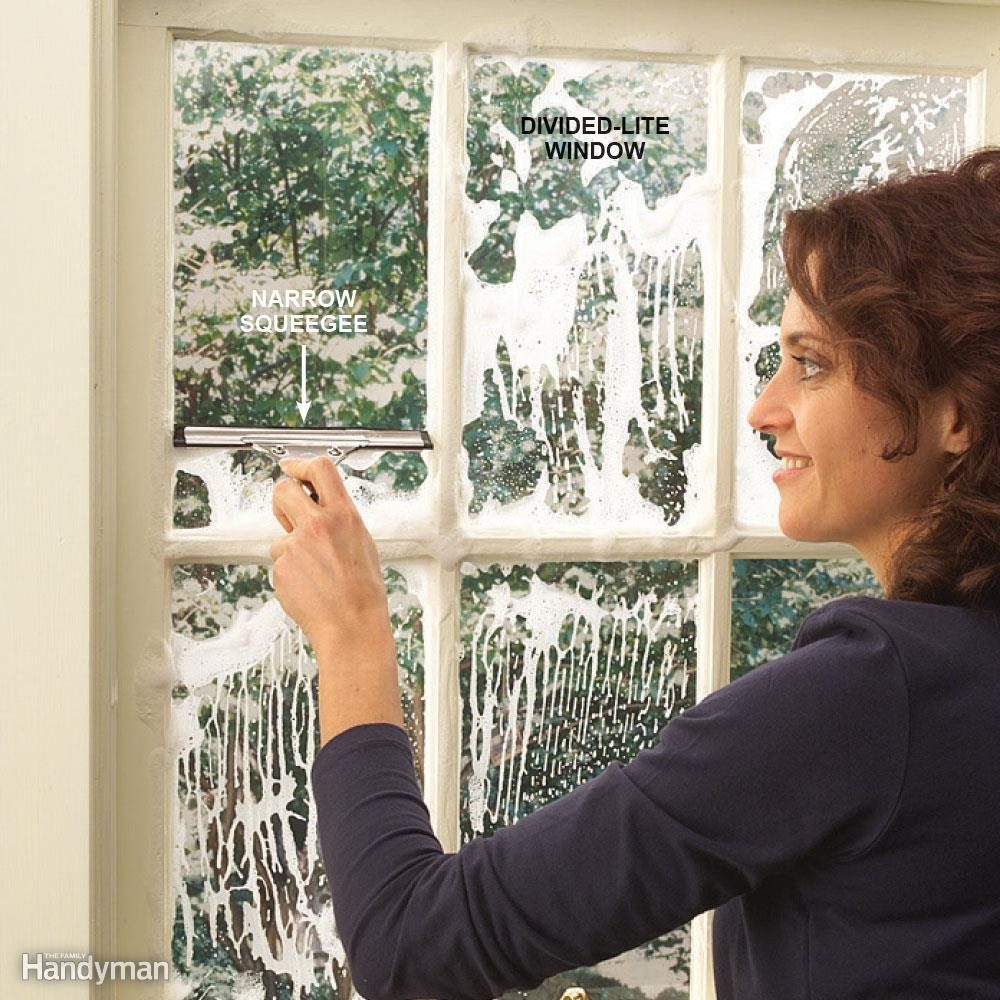
You Can Use a Squeegee Inside the House, Too!
Pro cleaners use squeegees inside all the time, even in houses with stained and varnished woodwork. When cleaning windows with a squeegee indoors, the key is to squeeze most of the soapy water out of the scrubber to eliminate excessive dripping and running. Then rest the scrubber on the edge of the bucket rather than dropping it in the water after each window. Depending on how dirty your windows are, you may be able to wash five or 10 windows before rinsing the scrubber.
Keep a rag in your pocket to wipe the squeegee and quickly clean up soapy water that runs onto the woodwork. Use a separate clean rag to wipe the perimeter of the glass. Microfiber rags also work great for window cleaning.
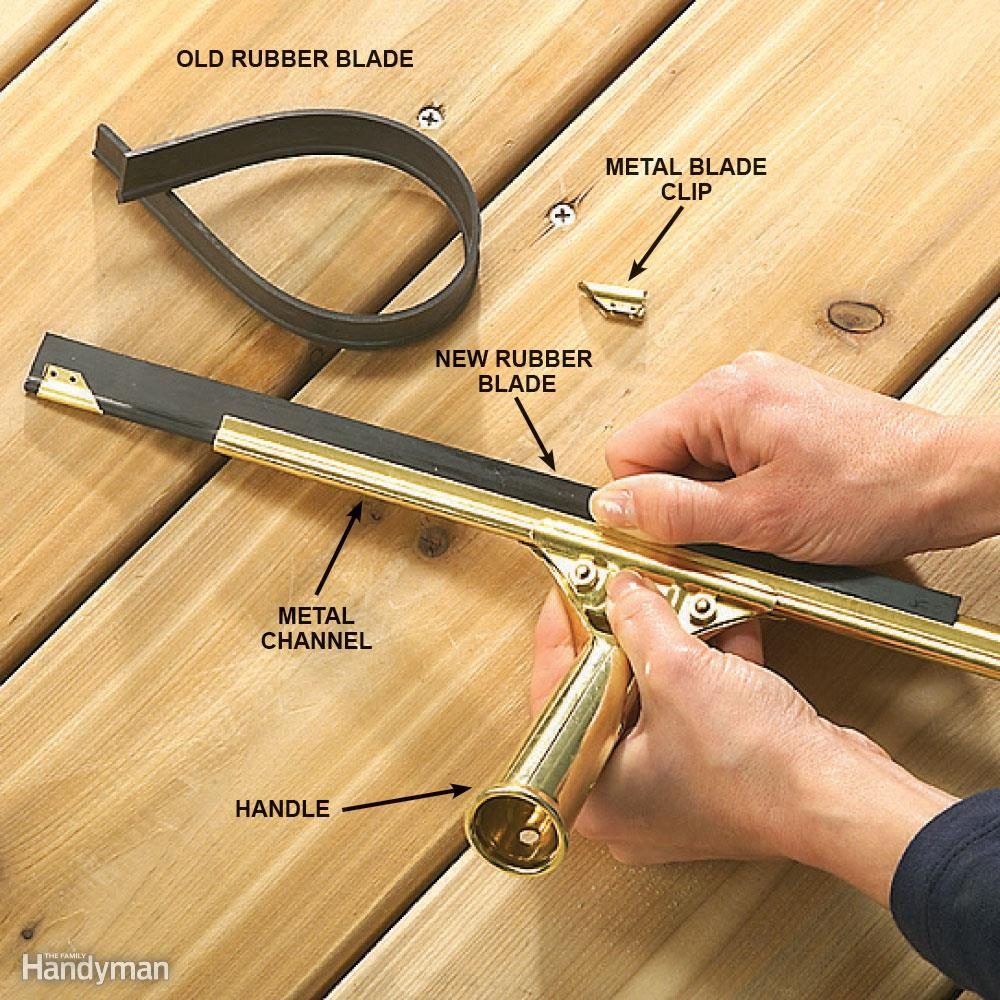
Changing a Squeegee Blade
- Remove the worn out blade.
- Grab the end of the blade and stretch it out to expose the metal clip.
- Slide the clip off, then slide the blade out the opposite end.
- Pro tip: Blades without clips are usually held together by a couple of screws and the clamp on the handle.
- Install the new blade.
- Slide it into the metal channel.
- Stretch it and reinstall the metal clip.
- Pro tip: If necessary, cut the end of the blade to leave 1/8 to 3/16 in. protruding from the channel.
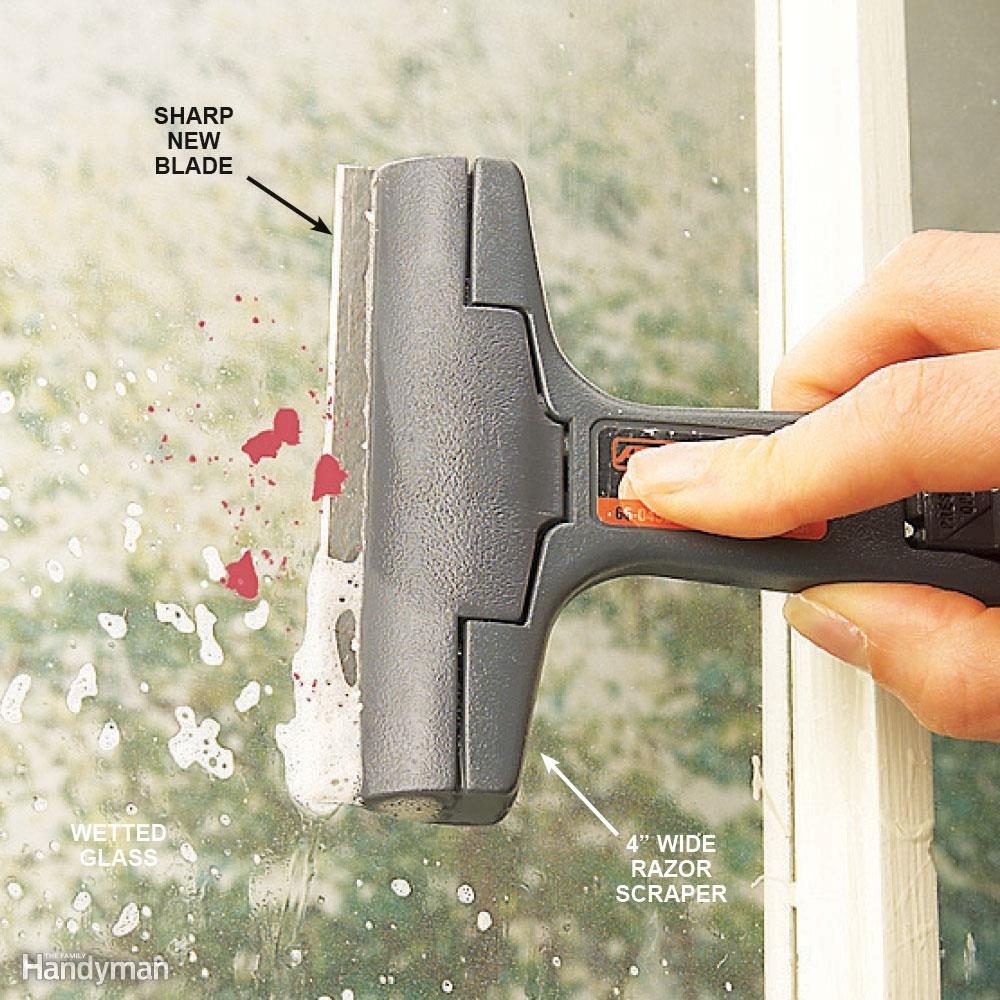
Tips for Hard-to-Clean Windows and Avoiding Common Mistakes
Tackle stubborn spots like paint specks and labels with a razor blade mounted in a holder. Hold the blade at a shallow angle against the wet glass and gently scrape with short, controlled movements to lift away the unwanted material. Always use a new blade to avoid scratching the glass. Wet the window first and push the blade across once. Rinse the blade and repeat on the next section to avoid trapping debris under the blade that could scratch the glass. Don’t use a razor blade on tempered glass.
- Remove tree pitch or bug droppings with a fine (white) nylon scrub pad. Wet the glass first and rub in an inconspicuous area to make sure you’re not scratching the glass.
- Clean tough glass stains and built-up mineral deposits from shower doors and other glass surfaces using mild household abrasives and an ordinary power drill.
- Use this glass cleaning solution for tough spots: Add 1/2 cup of ammonia per gallon of water to help remove greasy dirt for a DIY window cleaner
- Loosen sticky residue left from labels or tape by soaking it with a specialty product, usually found in the paint department at hardware stores and home centers. Then scrape off the residue with a razor blade.
Frequently Asked Questions About Window Cleaning
What is the best homemade window cleaning solution?
Professional cleaners often create their solution using equal amounts of vinegar and water. The natural acids dissolve grime while preventing frustrating marks that can remain after cleaning. When tackling outdoor windows with built-up grime, just a tiny drop of dish soap helps—though even a little too much creates stubborn suds you’ll chase around the glass.
How do professionals wash outdoor windows?
Quality tools and years of muscle memory. The secret isn’t fancy equipment but technique—keeping even pressure on the squeegee, creating slight overlap between strokes and wiping your blade after every single pass. On taller buildings, we’re serious about safety, using properly secured ladders with stabilizers or even harness systems when necessary—this would be the best way to wash windows.
What tool is best for streak-free window cleaning?
There is no tool that delivers better results than a well-made squeegee equipped with a fresh, unworn edge. Replace yours at the first sign of nicks or when it starts leaving streaks. I always carry microfiber cloths—one for wiping the blade between strokes and another for edge detail work. This simple combination delivers professional results that spray-and-wipe methods can’t match.
Can you clean windows without a ladder?
Absolutely! Most ground-floor and many second-story windows can be cleaned using extension poles. The market also offers excellent telescoping tools now. Modern window manufacturers now commonly include hinged designs that let you clean exterior glass from the safety of your home. For windows beyond safe reach, either secure a proper ladder with stabilizers or call a professional—some windows simply aren’t worth risking your safety.





















